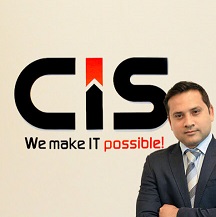

Contact us anytime to know more — Kuldeep K., Founder & CEO CISIN
As the demand for digital services increases, businesses strive to find innovative and cost-efficient methods of getting products out quickly while remaining competitively advantaged.
Many have taken to DevOps' continuous integration and delivery (CI/CD). Automation and constant monitoring are employed throughout the development life cycle from initial coding, testing, delivery and deployment; DevOps teams may use this to release features to consumers more rapidly, allowing them to provide immediate value faster for them and consumers.
DevOps teams working on different features for one application might use continuous integration to combine code in a shared repository.
This makes defects more straightforward to discover while eliminating merge issues where two engineers make conflicting changes that disrupt builds. Continuous delivery takes it one step further by automatically releasing changes into testing or production environments and shortening build, test, and deployment times.
DevOps teams may then more quickly iterate on business results by performing regular and small batch releases to better troubleshoot and mitigate problems affecting users.
Best Practices When Adopting CI/CD

Implementing Continuous Integration/Continuous Deployment may seem appealing for firms aiming to boost efficiency, innovate faster and decrease market time, but how can firms successfully adopt it? Implementation may initially appear daunting for teams working under time and resource restrictions.
Yet, combined with Continuous Integration/deployment, AI can transform any company. Here are some best practices designed to assist DevOps/Site Reliability Engineering (SRE) teams in establishing an impregnable Continuous Integration/Continuous Deployment pipeline:
Ensure End-to-End Observability
DevOps and SRE teams rely on visibility throughout their CI/CD pipeline to guarantee code quality. Implementing an intelligent end-to-end observability solution provides code-level insight into all software builds, apps, and services within any environment - regardless of whether these items have yet been deployed to end users or whether development teams' work continues on them.
As with any observability solution, its efficacy depends on what data it collects. As such, teams must also ensure the platform they select records metrics, logs, traces and user experience data to disclose technical performance and provide insight into how their builds impact business outcomes.
To avoid potential blind spots, teams should also ensure the observability platform can integrate seamlessly with all cloud platforms in their environment, supporting major industry standards.
Teams should prioritize continuous integration/deployment automation to facilitate continuous monitoring while ensuring its upgrade support remains current.
Automate
Manual labor duties can lead to human errors; automation reduces this risk while freeing teams up to focus on higher-value repetitive tasks.
DevOps pipeline and SRE teams can automate every repetitive process in their CI/CD pipeline, from development, testing, deployment, configuration updates, quality checks, dependency collection, etc - saving both time and errors while giving their developers more time for writing code or offering new digital cloud services for business customers.
Adopt an SLO-Driven Approach
DevOps approach teams often hold themselves to higher service-level goals (SLOs). While SLOs may initially appear solely to be used in production environments, DevOps must recognize that SLOs need not only to be evaluated against production workloads.
Instead, when creating high-quality software development with resilient features in pre production settings, too. SLOs should be integrated into your CI/CD pipeline to meet stakeholder expectations via SLA. Evaluating software quality against an identical production-level SLO promotes higher quality and fewer production defects and downtime - DevOps teams must also hold themselves to this standard across pre production environments.
Continuous Quality Validation
DevOps teams often must review several dashboards to meet code quality objectives. This is laborious and time-consuming, especially given the number and variety of software delivery pipelines.
Continuous quality validation becomes more sustainable and scalable when its evaluation process is automated to detect lousy application code at every step. By merging test results from various testing tools into an aggregate score and automatically calculating quality scores to compare against predefined criteria, DevOps teams gain confidence in automating deployment decisions without compromising code quality or the speed of deployments.
A global data and technology business specializing in clinical trials and research assistance for organizations worldwide, employs many of these best practices in its CI/CD procedures.
Formerly using various monitoring systems made maintaining observability challenging in an attempt to develop one comprehensive DevOps toolchain.
Their team sought to unify all processes into one platform as part of an effort to consolidate all monitoring tools into a single observability platform offering powerful AIOps capabilities, allowing it to truly embrace the principles of continuous integration/continuous deployment by identifying anomalous behavior quickly remediating fast enough and preventing problems before impacting user experience.
An Optimized and Intelligent Delivery Pipeline
As more companies seek to enhance delivery timelines and customer experiences, Continuous Integration/Continuous Deployment is expected to become standard practice among DevOps/SRE teams.
Teams may improve the success of their CI/CD implementation by following best practices that could advance the software delivery process.
How the Right CI/CD Strategy Can Increase Developer Productivity

A good CI/CD strategy is as follows:
-
Cloud Architect And Community Leader: We've witnessed how continuous integration/continuous delivery (CI/CD) pipelines have revolutionized how developers work.
Developers can focus more on writing code than manual tasks by automating build, unit test, and deployment processes, resulting in higher productivity and faster time-to-market.
Furthermore, tools like version control and automated testing enable early identification and correction of issues, thus decreasing needless rework while increasing code quality.
We worked with one startup that installed such a pipeline and saw a 30% boost in developer productivity within just one month.
-
Director Of Platform: Engineers who focus on their strengths will be happier and more productive, which has far-reaching ramifications.
An effective Continuous Integration/Continuous Deployment strategy enables engineers to focus on important projects without being sidetracked by time-consuming manual operations teams; problems will be detected sooner due to automated detection rather than only before deployment.
Common CI/CD Challenges And Their Solutions

Below are the six CI/CD challenges:
- Performance Issues: Page loading times, slow server replies, and memory optimization issues can significantly hamper your software's speed, responsiveness, stability and overall scalability if CI/CD deployment is handled correctly.
- Team Communication: Working within a team requires communication when something goes awry during deployment; otherwise, issues could develop from automated build tests detecting an error but failing to report it immediately.
-
Version Control: Version control is essential since all components and processes depend on consistent versions.
Any sudden modification to any process causes its entirety to break due to incompatibilities with existing codebases; automated system upgrades compel some programs to upgrade to newer versions, which disrupts this cycle, leading to significant disruption.
-
Flawed Automated Testing: Flawed automated testing systems cause developers stress.
Many checks are run during the CI/CD pipeline to ensure high-quality builds and swift deployment phase.
Still, if its testing process is flawed, an incorrect code base could be released, impacting performance testing negatively.
-
Security Vulnerabilities: Security flaws in CI/CD pipelines can make them vulnerable to hackers who could gain entry and steal any important information.
When expanding operations, new challenges in testing systems arise due to increased data volume, devices, and infrastructure requirements.
- Complex Debugging Reports: Sometimes, the reports created could be more straightforward for engineers to comprehend, and this reduces product release velocity.
Conclusion
No matter the challenge of continuous integration/continuous delivery (CI/CD), effective testing requires real browsers and real devices with 100% uptime cloud selenium grid support to produce accurate results every time.
Continuous delivery solutions are constantly developing, with recent advancements attributable to open source. As practitioners, we must adapt engineering methodologies more closely to business requirements while constantly adapting them for appropriate reasons.

